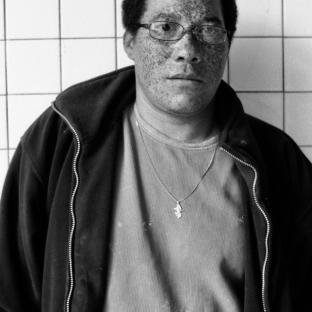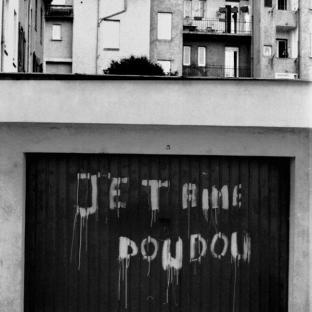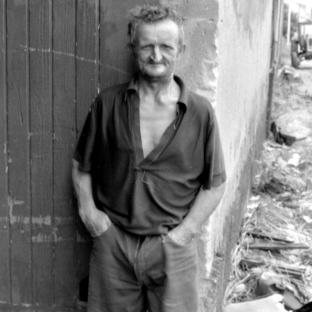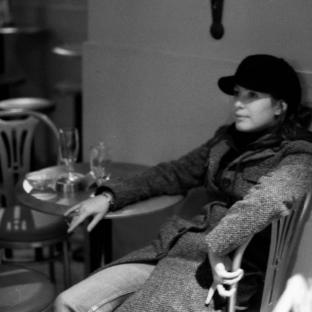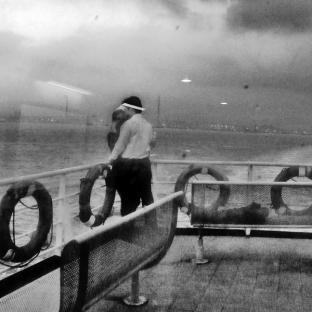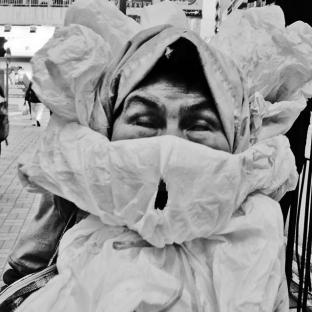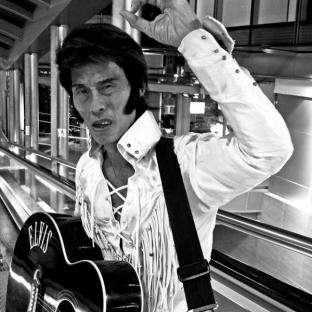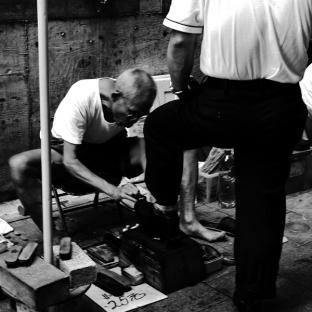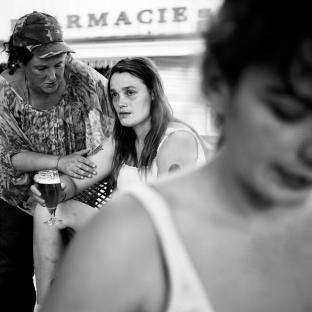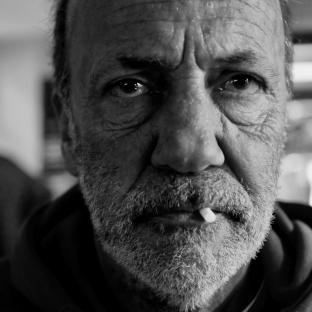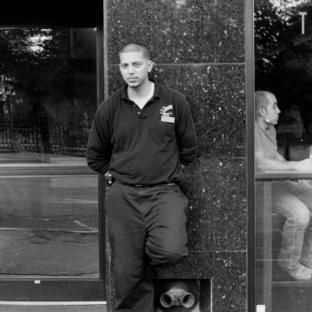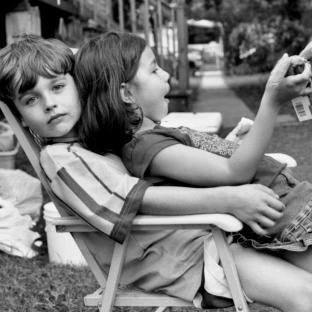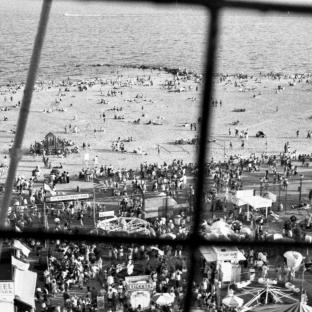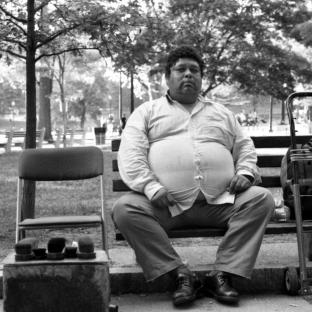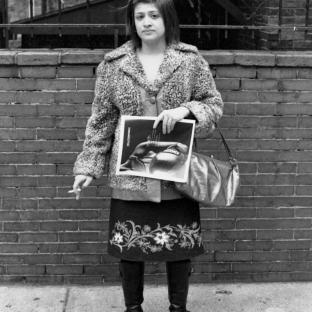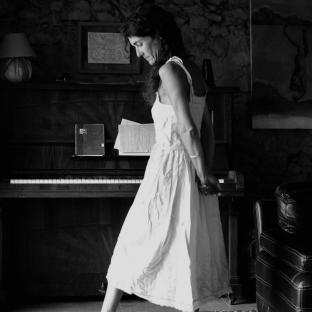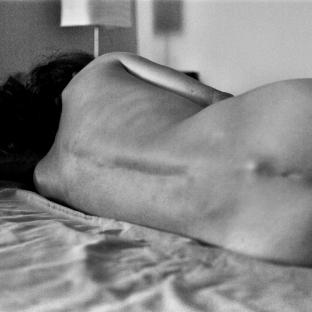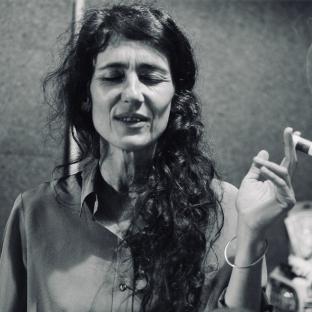If we must acknowledge the genre of "street photography," that of capturing candid moments, in the closest contact, revealing the essence of the ordinary urban world, it must also be acknowledged that not everything happens outdoors, between the pavement and the sidewalk. I believe that the "street photographer," leveraging the weariness of their limbs, exhausted by the coming and going, back and forth, would be right to push open the doors of bistros to stop there. To take a break, in this "night watch" led by Jérôme Jacob, like a attentive watchman.
I even think that they will make better "street photographs" there. Because it is precisely there that one finds the very essence of what a photographer, such as Jérôme Jacob, seeks. A congregation, in the etymological sense of the term. Characters and personalities, gathered every day - or rather every night, judging from the atmosphere of the photos - around facts, gestures, rituals. And exchanged words, among regulars, perhaps trivial, daily, mundane, but which still matter because they are authentic. Frank, assertive, without ulterior motives. At the bar, one reveals oneself entirely, without restraint. I won't pronounce on their joyful or tragic, inspired or foolish nature - everyone will make up their own mind - but I affirm that these moments, captured by the photographer, are also perfectly authentic. In this case, they deserve to be photographed to be shown.
Jérôme Jacob has chosen portraiture as the predominant visual form for this series. Light and composition are perfectly executed for the form. Making physiognomies and faces, both the photographic reflection of a moment, and of a thought or feeling. We know what to read in a gaze directed at the unseen bartender. We know what to think about the way the model pulls on their cigarette and holds back the smoke.
And above all, we know what to rejoice in all those moments of tenderness shown by very touching "double portraits." And I think very sincere, when both "models" ultimately have less consideration - and thus less temptation to put on a false front - for the photographer, than reciprocal attention for their partner, in embracing them. These are perfectly true portraits!
Jérôme Jacob thus shows us that society is still being made. That bars are not just a cacophony of individual opinions shouted out while insistently pounding one's index finger on the counter, disregarding one's interlocutors. But that we still want - and certainly more than anything else - to hug each other, to embrace, to kiss. It would be right to do so just as much at the Pronostic bar in Auch as in front of the City Hall of Paris. Going to the bistro - and why not photograph it - is ultimately making the optimistic bet that we can still "make society" in a very simple but very legitimate way.
FR - RONDE DE NUIT
S’il faut admettre le genre “photographie de rue”, celui d’une prise de vue sur le vif, au contact le plus proche, révélant le sens du monde ordinaire, urbain, de faubourg, il faut admettre également que tout ne se passe pas qu’en extérieur, entre chaussée et trottoir. Je pense que le “street photographer”, mettant à profit la lassitude de ses membres, exténués par le va et le vient, de long en large, aurait raison de pousser les portes des bistrots pour s’y arrêter. Pour y faire une halte, dans cette “ronde de nuit” que mène Jérôme Jacob, comme un veilleur attentif.
Je pense même qu’il y fera de meilleures photographies “de rue”. Parce qu’on y trouve justement l’essence même de ce qu’un photographe, tel que Jérôme Jacob, y cherche. Une congrégation, au sens étymologique du terme. Des personnages et des personnalités, rassemblés chaque jour - ou plutôt chaque nuit, à en juger de l’atmosphère des photos - autour de faits, de gestes, des rituels. Et de paroles échangées, entre habitués, peut- être triviales, quotidiennes, banales, mais qui sont tout de même celles qui comptent car elles sont authentiques. Franches, affirmées, sans arrière-pensée. Au bar-PMU, on se livre intégralement, sans retenue. Je ne me prononcerais pas sur leur caractère joyeux ou tragique, inspiré ou idiot - chacun se fera son idée - mais j’affirme que ces instants, captés par le photographe, sont tous, eux aussi parfaitement authentiques. Dans ce cas, ils méritent d’être photographiés pour être montrés.
Jérôme Jacob a choisi le portrait comme forme visuelle majoritaire pour cette série. Lumière et composition sont parfaitement exécutées pour la forme. Faisant des physionomies et des visages, tant le reflet photographique d’un instant, que d’une pensée ou d’un sentiment. On sait quoi lire dans un regard porté sur le taulier hors-champ. On sait quoi penser de la façon dont le modèle tire sur son mégot et en retient la fumée.
Et surtout on sait de quoi se réjouir de tous ces instants de tendresse montrés par des “doubles portraits” très touchants. Et que je pense très sincères, quand l’un et l’autre “modèles” ont finalement moins de considération - et donc de tentation de se montrer sous un faux air - pour le photographe, que d’attention réciproque pour sa ou son partenaire, en l’embrassant. Voilà des portraits parfaitement justes !
Jérôme Jacob nous montre ainsi que la société se fait encore. Que les bars ne sont pas qu’un brouhaha d’opinions individuelles qu’on gueule en appuyant avec insistance son index sur le comptoir, au mépris de ses interlocuteurs. Mais qu’on a encore envie - et certainement plus que de toute autre chose - de se donner l’accolade, de s’enlacer, de se donner un baiser. On aurait raison de le faire tout autant au bar du Pronostic à Auch, que devant l’Hôtel de Ville de Paris. Aller au bistrot, au PMU - et pourquoi pas le photographier - c’est finalement faire le pari optimiste qu’on peut encore “faire société” d’une manière très simple mais très légitime.
Arnaud Pagnier











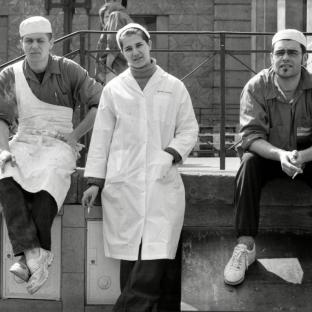
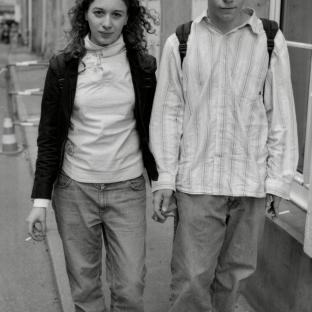





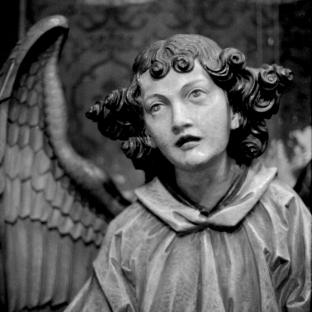


.jpg)


